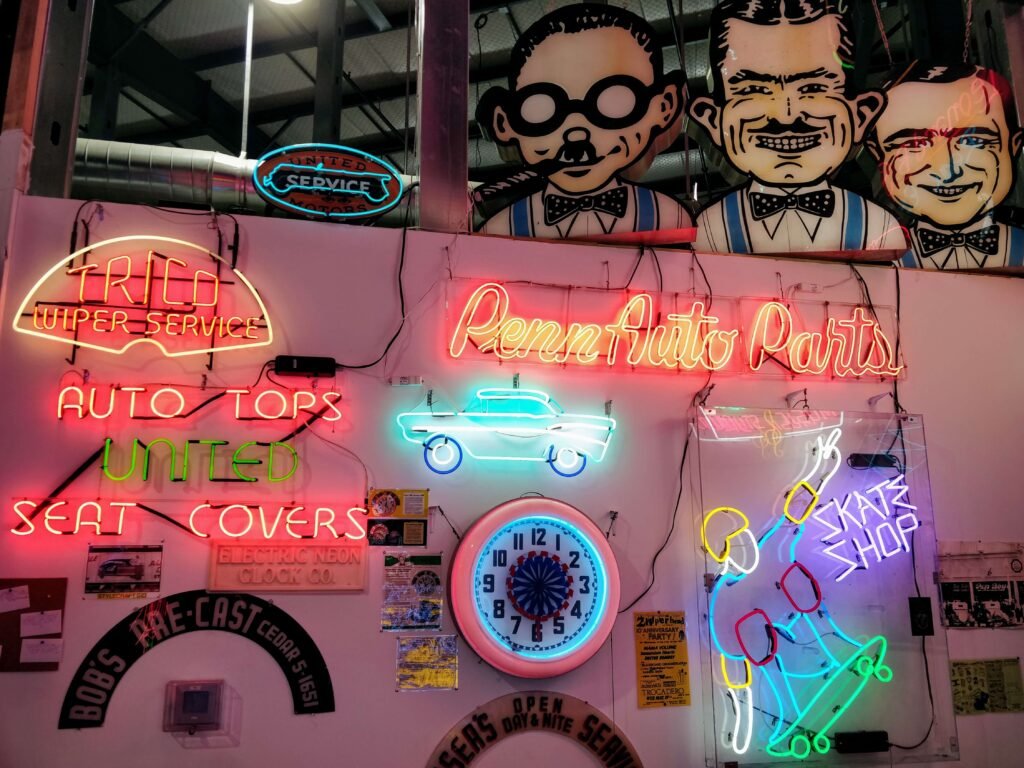
Illuminating American History, Sign by Sign
I’ll confess to feeling a little disappointed when we first walked into The Neon Museum of Philadelphia. [1]We see this HUGE building, and I foresee us wandering around for hours. The actual museum was difficult for us to find within the building because I am not descended from a family of cartographers.
I’d been looking forward to visiting ever since I discovered the museum’s Instagram account months earlier. [2]Their Instagram game is STRONG. I’d imagined standing directly in front of the signs the way you do paintings in an art museum, basking in their warm, colorful glow. [3]They were warm. Uncomfortably so since it was like 200 degrees Fahrenheit outside.
Instead, most of the museum’s 100-plus signs are crammed into a 1,500-square-foot space with three-story-high walls. While some are at eye level, many are neck-craningly far above. And with such a jumble of signs, how was I supposed to focus on any one?
Just as crankiness started to kick in, Len Davidson walked over and changed my perspective. [4]Cool guy. He was sent over to talk to me about my Waffle House shirt by Mrs. Davidson. This proves what I have always suspected. The Waffle House shirt is a HIT with the ladies.
The Man Behind the Museum
Davidson is the museum’s founder and the owner of most of its signs. He’s a former sociology professor whose interest in neon stems from a love of old roadside signs. In the 1970s, he apprenticed himself to a neon sign maker in Gainesville, Florida, and he continued making and restoring signs after returning to his hometown of Philadelphia in 1979.
Back then, he went around to all the sign shops in Philadelphia and asked them to share their stories, some of which he relates in the explanatory text that accompanies each sign.
A Light Bulb Goes Off
Davidson is very much the former sociology professor—“We’re not so much interested in nostalgia; we’re interested in culture,” he said at the museum’s virtual grand opening in January 2021.
And like any good professor, Davidson opened my eyes to something I’d never considered: “The old sign guys were like folk artists,” he said. “Most of them had no formal art training; they were just designing out of their imaginations.”
Suddenly, it made total sense that I’ve always loved both neon and folk art—they’re basically first cousins.
Davidson’s enthusiasm is infectious, and many of his interests overlap with ours. When we told him about the blog, he called over his wife, Judy, and told her, “They’re roadside people.” (We didn’t know until then that that’s what we were!) He encouraged us to check out the museum’s little reading nook, which features books on roadside attractions, folk art, Philly history, and, of course, neon. He also told us not to miss the little temporary exhibit about ghost signs.)
Then he moved on to chat with other patrons, and I, no longer grouchy, spent the rest of the hour enjoying the signs and their histories.
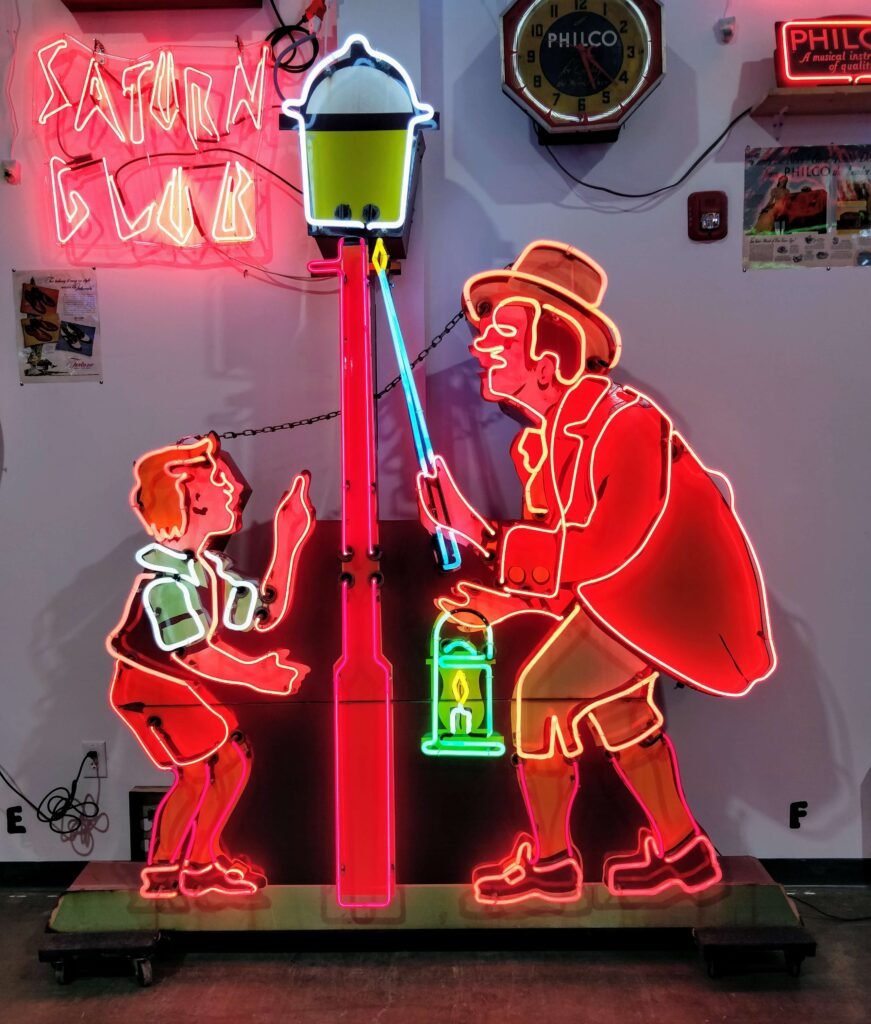
Lamplighter
This is a Howard Johnson’s lamplighter sign from the 1950s. HoJo put these signs on the exterior of motels that had banquet spaces (called Lamplighter Rooms) for business meetings and other events.
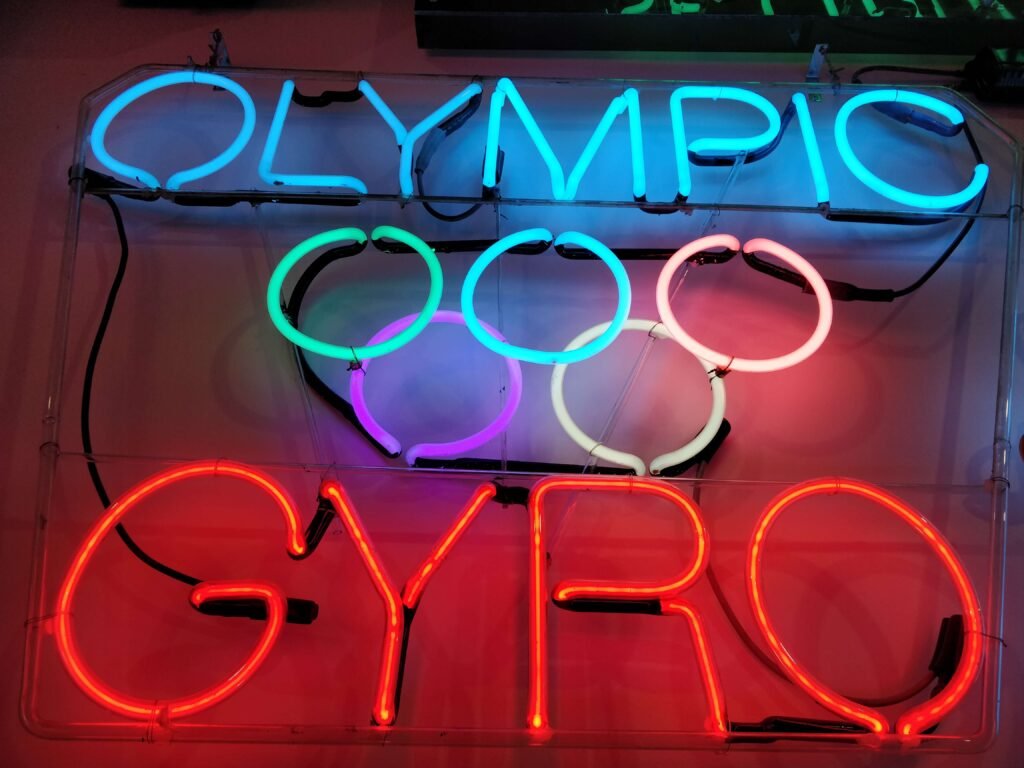
Olympic Gyro
This sign once lured hungry patrons to the Olympic Gyro food stall inside the famed Reading Terminal Market. [5]DiNic’s Roast Pork Sandwich! But in 2012, the U.S. Olympic Committee forced the business, which at that point had been around for almost 30 years, to stop using the word “Olympic.” It now calls itself Olympia Gyro. [6]A gyro by any other name…
Davidson, by the way, told Billy Penn news that he’s restored about 25 of the signs at Reading Terminal Market, including its own famous exterior sign.
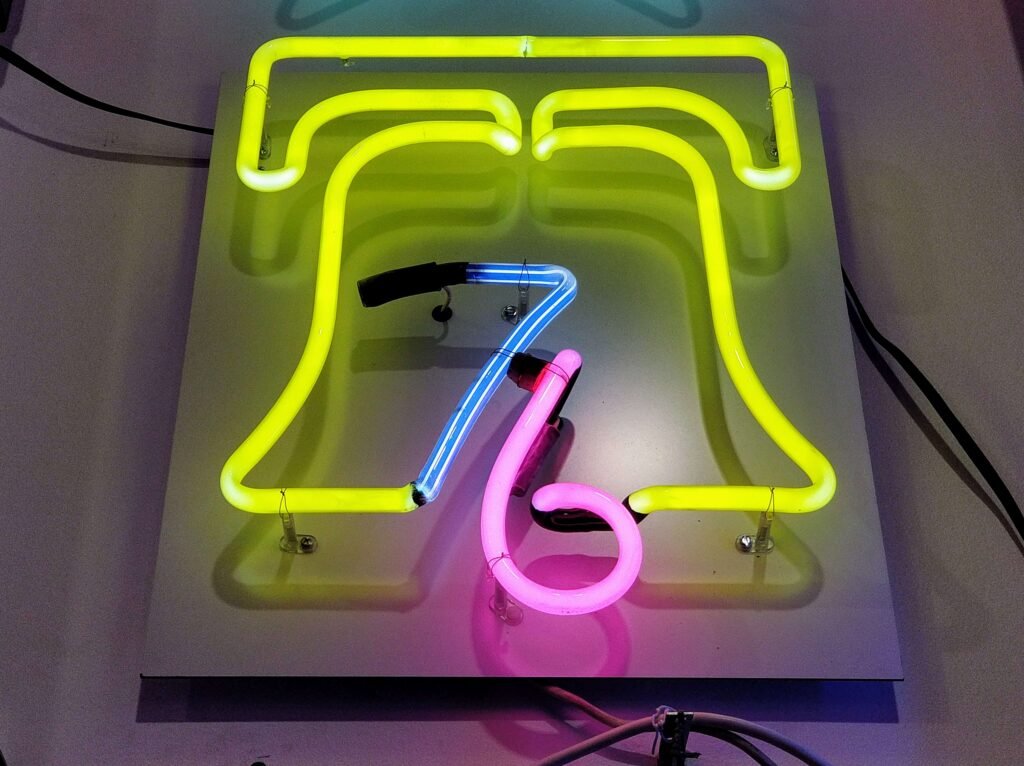
Bicentennial Bell
This bell was created to celebrate the U.S. bicentennial in 1976.
Hair Replacement Center
How can you not love this animated sign showing a bald man transformed by his visit to the Hair Replacement Center? In the accompanying text, Davidson explains that it was created in the 1960s by a mega-talented (and apparently mega-grumpy) artist named Joe Feldman, owner of Ajax Signs. Feldman designed scores of Philadelphia signs, the most famous of which is the Pat’s Steaks Crown, which is also on display in the museum.
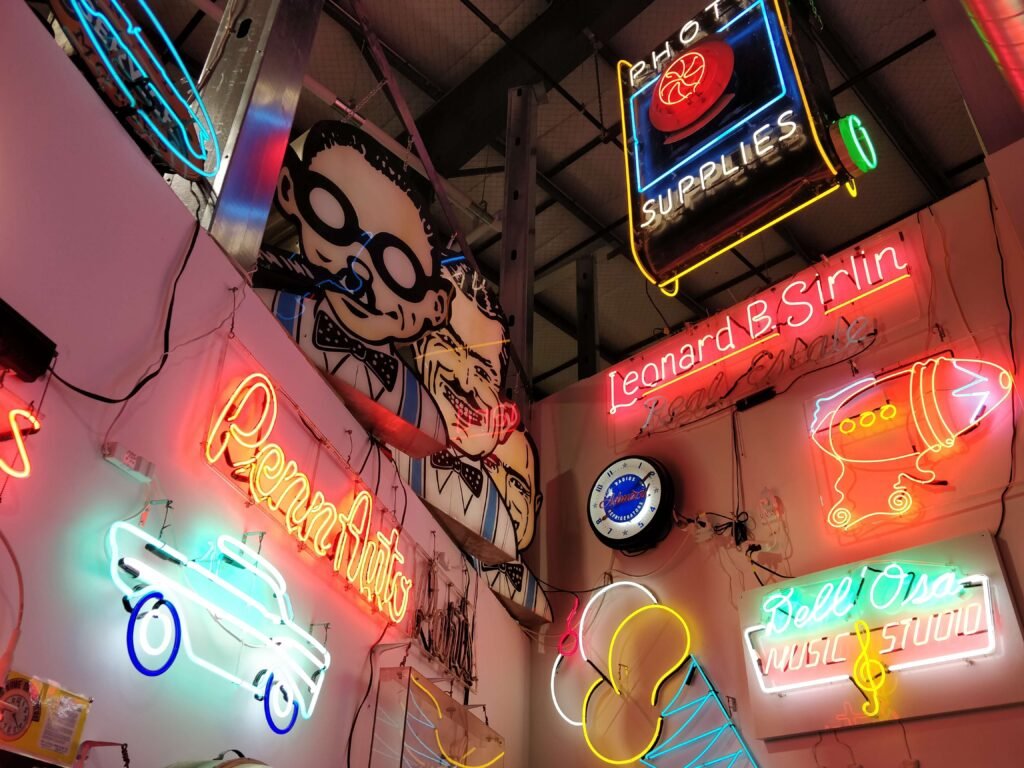
Pep Boys and Ray Guns
The Pep Boys logo is apparently a favorite of Davidson’s. The three men represent the company’s founders, Manny, Moe, and Jack. (There were actually two guys named Moe for a total of four founders; I’m not sure which one got left out of the logo.) The very first Pep Boys opened in Philadelphia in 1921, and the company’s headquarters is still there.
And see that ray gun on the right-hand side of the above photo? That once graced Rocketships and Accessories, a space toy store located on Philly’s South Street between 1981 and 1989.
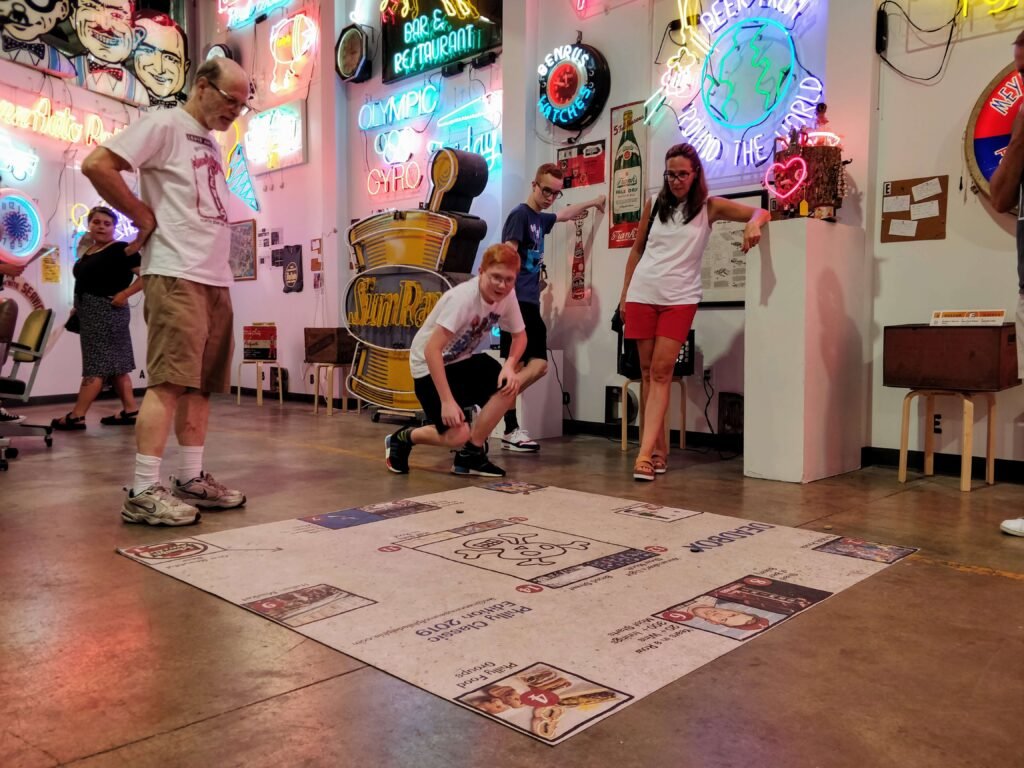
Deadbox
Speaking of toys and games, here’s Davidson playing Deadbox with a family of patrons. When he spotted the teens, he made a beeline to introduce himself—and the game—to them. Children once played Deadbox on Philadelphia’s streets and sidewalks, attempting to flick bottle caps from one numbered square to the next, in order, without landing in the central Deadbox. [7]The part I liked best was that Mr. Davidson did not take it easy on those kids. He crushed them and delighted in the crushing. Man after my own heart.
The rules of the game—even the name of the game—varied by location. New Yorkers also played, but they called it Skelly or Skully. Davidson is on a mission to bring it back, and with it the city’s rowhouse culture.
(This seems like the perfect place to share this quote from Davidson, found in the Billy Penn news article referenced above: “The kinds of museums that I like the most are what are called personal museums, and they’re usually run by very strange, obsessed people,” he said. “That sort of obsessive weirdness makes for a lot of fun.”)
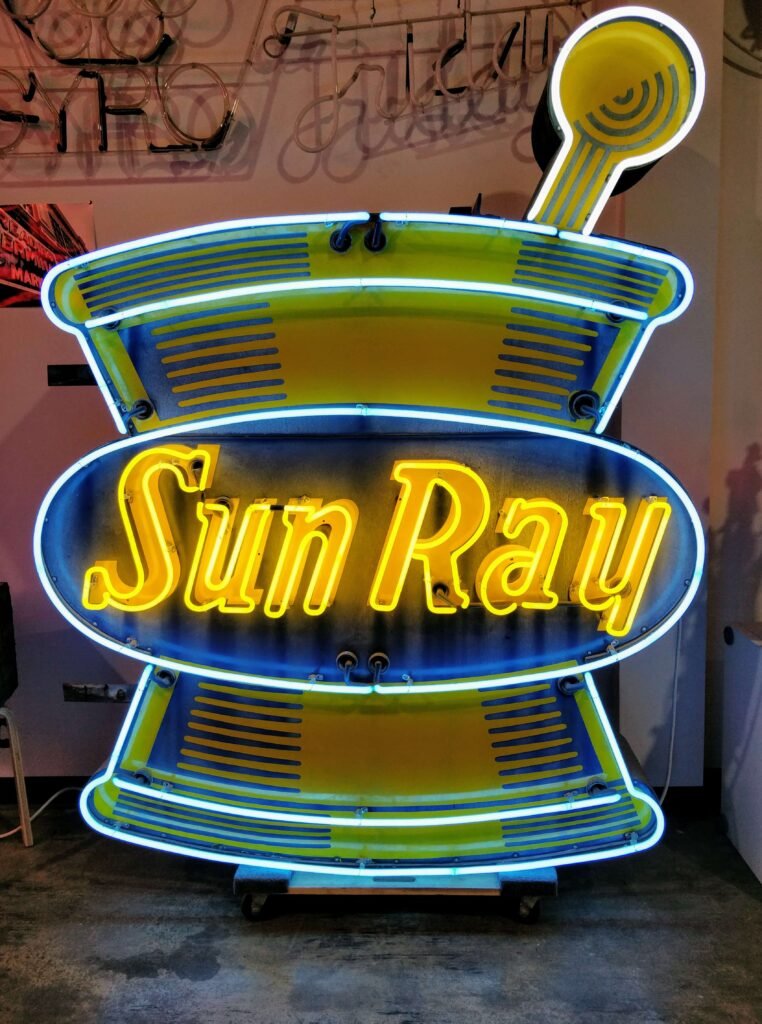
Sun Ray Drugs
Sun Ray Drugs (or SunRay or Sunray—even the company’s own website spells it different ways) was once the largest chain of independently owned drug stores in the country, with more than 150 locations in Pennsylvania, Delaware, New Jersey, and Maryland.
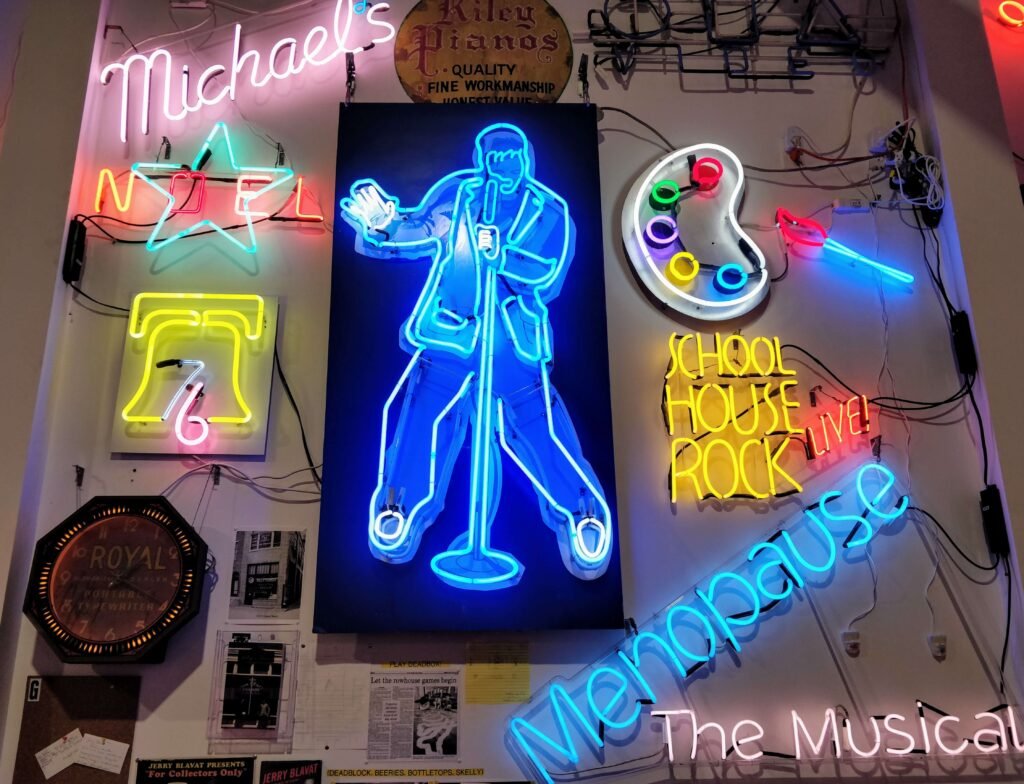
Elvis Wants You to Visit
Currently, The Neon Museum of Philadelphia is open Fridays through Sundays. Admission is $10, and it’s best to purchase timed tickets in advance, though walk-ups are permitted as long as there is space. The museum is located in the NextFab Building at 1800 N. American Street in North Philly, which is also home to a pretty swanky Mexican restaurant called Sor Ynez.
FredNotes
| ↑1 | We see this HUGE building, and I foresee us wandering around for hours. The actual museum was difficult for us to find within the building because I am not descended from a family of cartographers. |
|---|---|
| ↑2 | Their Instagram game is STRONG. |
| ↑3 | They were warm. Uncomfortably so since it was like 200 degrees Fahrenheit outside. |
| ↑4 | Cool guy. He was sent over to talk to me about my Waffle House shirt by Mrs. Davidson. This proves what I have always suspected. The Waffle House shirt is a HIT with the ladies. |
| ↑5 | DiNic’s Roast Pork Sandwich! |
| ↑6 | A gyro by any other name… |
| ↑7 | The part I liked best was that Mr. Davidson did not take it easy on those kids. He crushed them and delighted in the crushing. Man after my own heart. |
